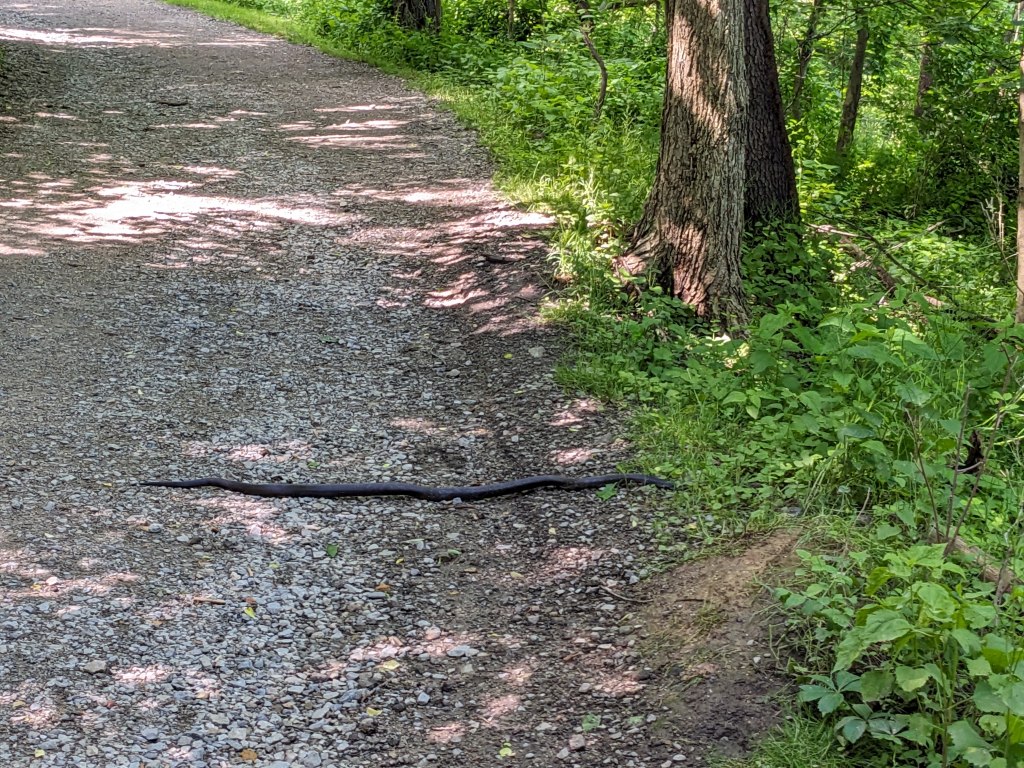
25 May 2024
Sometimes while birding we find species we aren’t looking for. This spring in Frick Park we’ve seen two slow moving snakes and two “robbers” mating.
The rope across the trail, above, is a black rat snake or eastern ratsnake (Pantherophis alleghaniensis) who’s looking for lunch or a safe place to digest his meal.
Two weeks earlier a group of us encountered another black rat snake off trail in dappled shade. It came to a halt when 12 excited people stopped to take its picture.
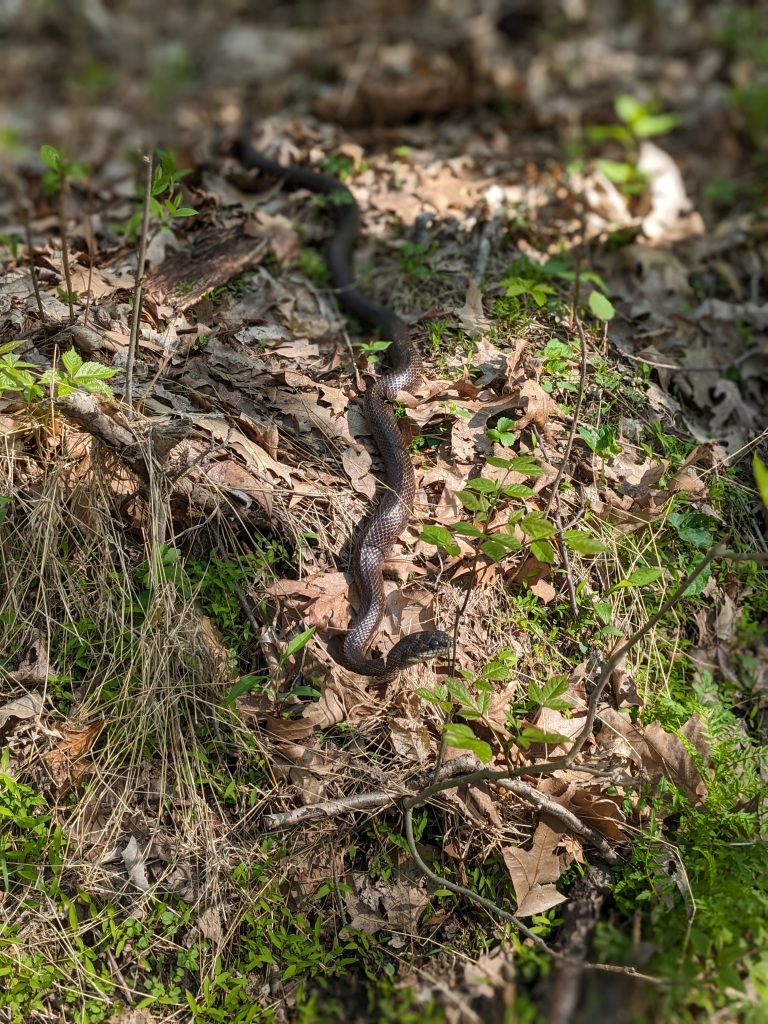
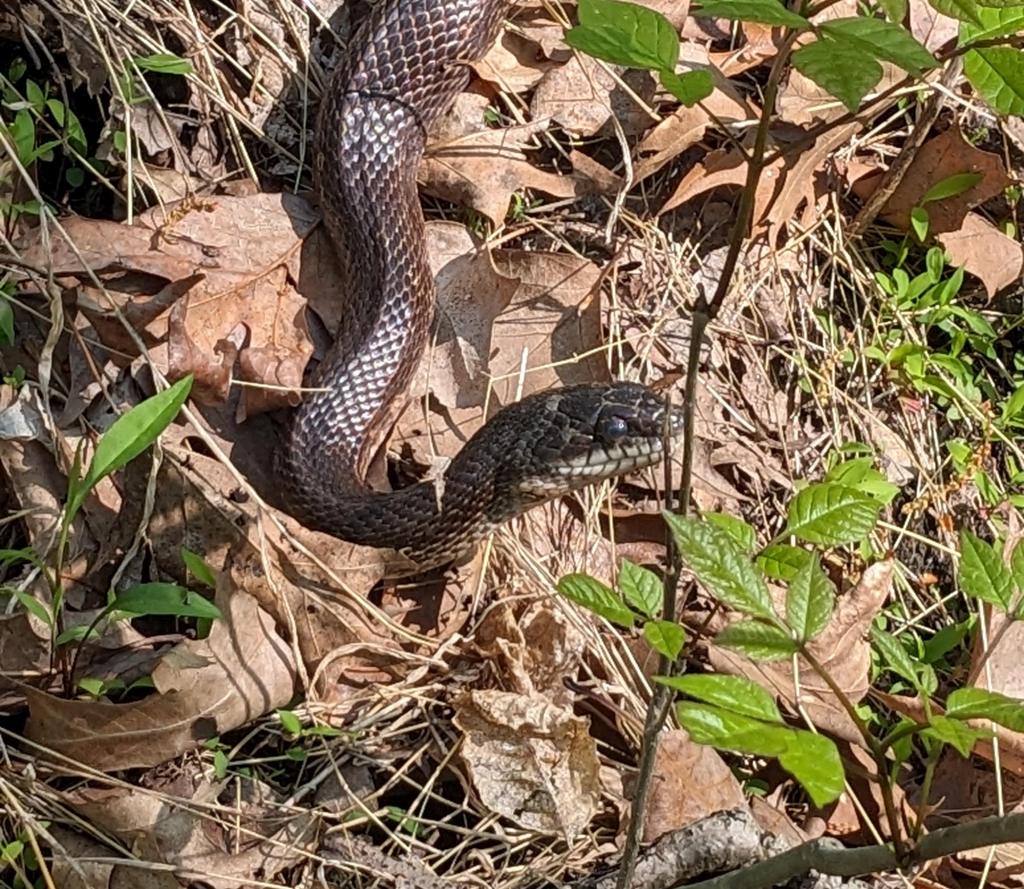
Black rat snakes are big but not venomous and tend to be docile (from a human point of view). They kill by constriction to eat rodents, lizards and frogs and can climb trees to eat nestlings and eggs. If you find a black rat snake in your shed it’s been performing a public service by eating mice.
Robber flies, the Asilidae family, were news to me. When Charity Kheshgi and I saw these bugs mating we didn’t know what they were.
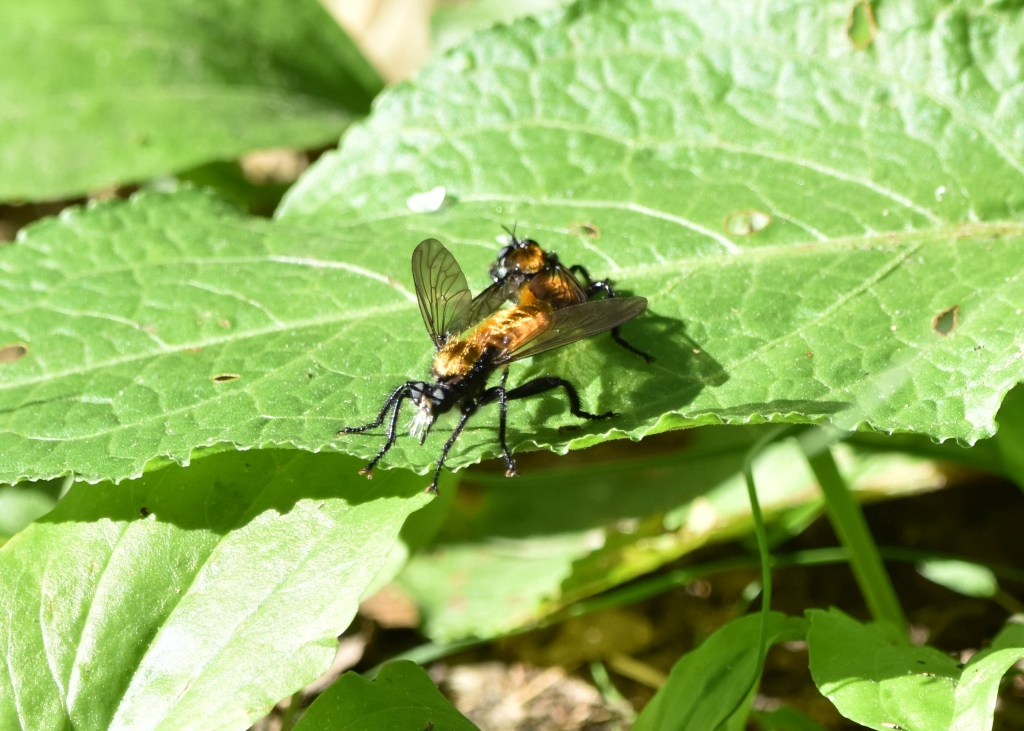
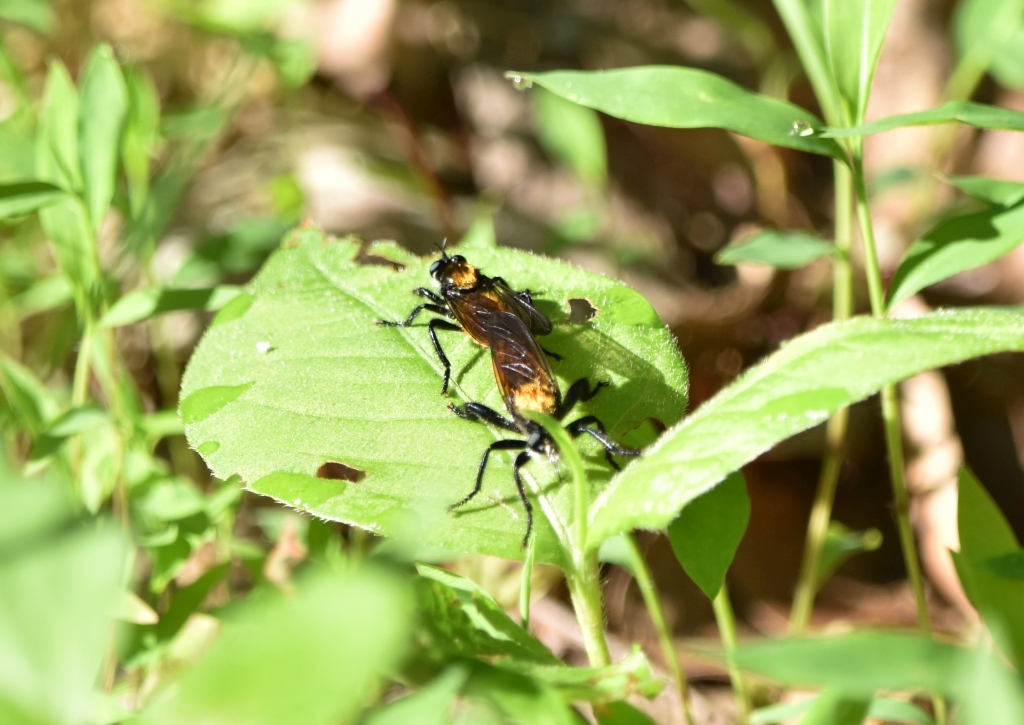
They are identified as members of the robber fly family because they have bristles (called mystax) on the face, a depression between the eyes, and a stout proboscis, described below.
They are powerfully built, bristly flies with a short, stout proboscis enclosing the sharp, sucking hypopharynx. The name “robber flies” reflects their expert predatory habits; they feed mainly or exclusively on other insects and, as a rule, they wait in ambush and catch their prey in flight.
— Wikipedia Asilidae
Robber flies don’t attack humans but they’ll give a painful bit if provoked.
So we didn’t provoke them.